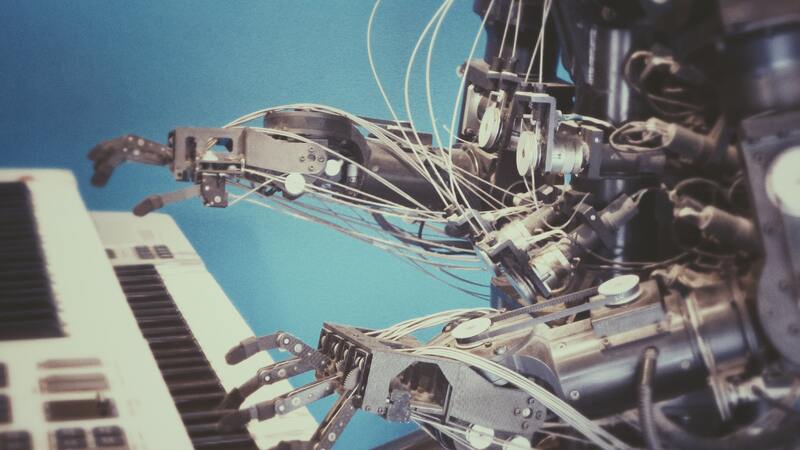The Future of RPA: Emerging Trends and Innovations
Introduction
Robotic Process Automation (RPA) is an advanced technology that employs software robots or "bots" to automate repetitive, rule-based tasks in business processes. These bots replicate human interactions with digital systems, handling tasks such as data entry and form filling. RPA optimizes operations, improving efficiency and accuracy while lowering costs. It seamlessly integrates with existing software applications, making it adaptable to diverse industries. Unlike traditional automation methods, RPA does not require extensive coding or significant changes to existing systems. Instead, it operates on top of existing infrastructure, seamlessly integrating various software applications. RPA benefits industries ranging from finance and healthcare to customer service, allowing businesses to focus on strategic, creative, and customer-oriented tasks. In contrast, mundane and repetitive tasks are handled efficiently by bots.
Role of RPA in the Future
The future role of Robotic Process Automation (RPA) is poised to be transformative. RPA will be the linchpin in optimizing business processes, streamlining operations, and boosting productivity. Its ability to automate repetitive tasks precisely will lead to substantial time and cost savings for organizations across various sectors. Integration with Artificial Intelligence (AI) will elevate RPA's functionality, enabling intelligent decision-making and predictive analysis, thereby enhancing operational efficiency.
In customer-facing domains, RPA will revolutionize interactions. Automated responses and streamlined workflows will ensure rapid customer service and higher satisfaction levels. Furthermore, as remote and hybrid work models become the norm, RPA will facilitate seamless operations. It will empower a geographically dispersed workforce by automating tasks, ensuring consistent performance, and enabling businesses to function efficiently regardless of physical locations.
Additionally, RPA will strengthen regulatory compliance efforts. Businesses can mitigate risks effectively by automating compliance checks and ensuring adherence to industry standards. This evolution will demand professionals skilled in automation technologies, fostering job growth and encouraging businesses to invest in workforce training. Ultimately, RPA will be integral to organizational agility, innovation, and competitiveness in the future digital landscape.
Robotic Process Automation (RPA) is constantly evolving, with emerging trends and innovations molding its future. Below, you'll find some fundamental advancements in the RPA field:
Intelligent Automation
RPA is integrating with cutting-edge technologies such as Artificial Intelligence (AI) and Machine Learning (ML) to facilitate intelligent automation. Bots powered by AI can comprehend intricate data patterns, enabling them to handle complex tasks, interpret natural language, and make context-based decisions.
Process Discovery and Mining
Novel tools are emerging, enhancing businesses' ability to identify automation opportunities effectively. Process discovery tools analyze user interactions within applications, pinpointing repetitive tasks and simplifying the decision-making process regarding which processes to automate.
Hyperautomation
Hyperautomation combines advanced technologies like AI, ML, and process mining with RPA to automate complete end-to-end business processes. This approach targets automation for individual tasks and entire business processes, enhancing efficiency and streamlining operations.
Cloud-Based RPA
Cloud-based RPA solutions are gaining traction due to their scalability, flexibility, and ease of implementation. Cloud RPA enables businesses to swiftly deploy automation processes without substantial investments in infrastructure, ensuring efficient operations.
Attended Automation
Unlike independent unattended automation, attended automation collaborates with human employees. These bots offer real-time suggestions, automate repetitive tasks, and boost productivity by working alongside employees.
Citizen Development
RPA tools are increasingly user-friendly, empowering non-technical users (citizen developers) to create automation scripts. This democratization of automation enables business users to design and implement uncomplicated automation solutions, reducing the burden on IT departments.
Analytics and Reporting
RPA platforms are integrating comprehensive analytics and reporting features. These tools offer insights into automation performance, process efficiency, and optimization opportunities. Advanced analytics support businesses in making data-driven decisions to enhance their processes.
RPA in DevOps
RPA is becoming an integral part of the software development lifecycle. Bots are employed to automate DevOps testing, deployment, and monitoring processes, ensuring quicker releases and higher-quality software products.
Security and Compliance
RPA developers are concentrating on enhancing security features to safeguard sensitive data. Improvements in compliance functionalities ensure adherence to industry regulations, guaranteeing that automated processes meet legal requirements.
Remote Work Enablement
RPA is utilized to facilitate remote work environments. Bots automate tasks for remote employees, ensuring seamless and efficient operations regardless of employees' physical locations.
These developments showcase RPA's dynamic landscape, where ongoing progress empowers businesses to enhance efficiency, precision, and innovation.
Conclusion
In conclusion, the future of RPA is auspicious, driven by a convergence of technologies, increased accessibility, and a growing focus on intelligence and compliance. Businesses that embrace these emerging trends and innovations in RPA will optimize their operations and unlock new possibilities for growth and innovation. As RPA continues to advance, it is poised to reshape the work landscape, empowering businesses to attain previously unattainable heights of efficiency, productivity, and competitiveness on the global stage. Integrating Artificial Intelligence (AI) and Machine Learning (ML) into RPA systems with optimized business process definitions equips automation tools with the capability to make informed, data-driven choices, ultimately resulting in unparalleled precision and effectiveness. Cloud-based RPA solutions enhance scalability and accessibility, allowing businesses to integrate automation across various departments and locations seamlessly. This innovation enhances customer experiences, refines data analysis, and facilitates informed strategic decisions. Additionally, the heightened focus on governance and compliance ensures that RPA implementations are secure and align with regulatory requirements, instilling confidence in businesses deploying automation initiatives. As we move forward, the future of RPA lies in its ability to automate tasks and its capacity to transform entire business landscapes. By embracing these emerging trends and innovations, organizations are not merely automating processes but fundamentally redefining how work is done. RPA is not just a tool but a catalyst for organizational evolution, driving efficiency, productivity, and competitiveness.





